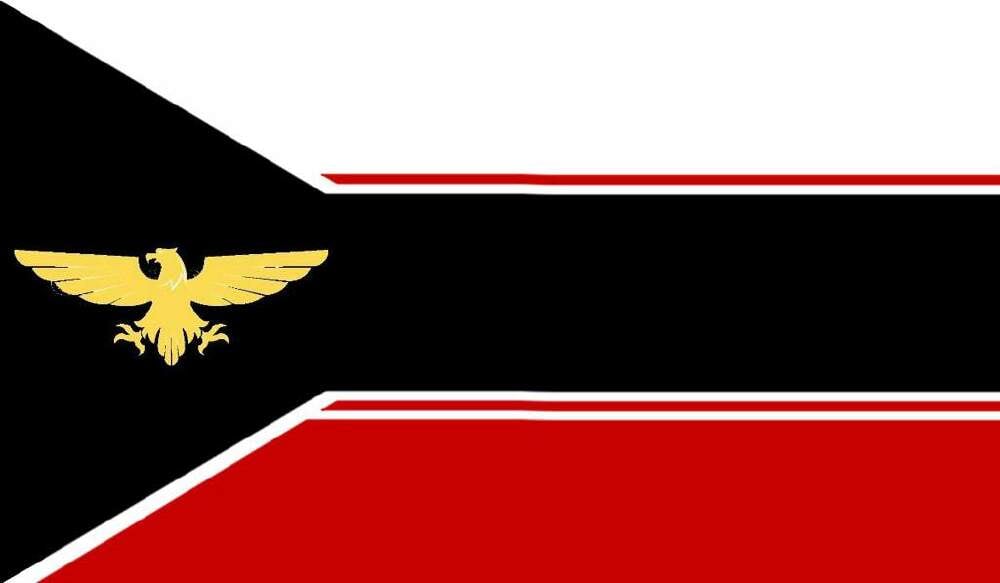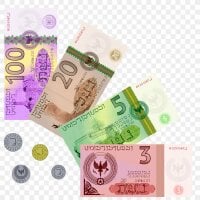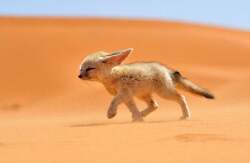| National Factbook |
| Flag: |

|
| Nation Name: |
Arcestan |
| Leader Name: |
Ali bin AL-Sarraf |
| Currency: |

Arcestani dinar |
| National Animal: |

Fennec fox |
| History: |
Arcestan is a newly established desert empire located within the borders of Kuwait, officially declaring its formation just one day ago under the leadership of Ali bin Al-Sarraf, who now holds the title of Supreme Leader. The capital, Silk City, serves as the administrative and symbolic center of this emerging entity. Though small in land area, Arcestan has drawn immediate regional attention due to its sudden assertion of independence and aggressive political stance. The empire was formed by a coalition of tribal and local groups who, under Al-Sarraf’s leadership, claimed self-rule and began establishing the framework of a centralized government. The transition from informal governance to an organized imperial structure was rapid, with Al-Sarraf announcing key state institutions within hours of the founding declaration. While the empire lacks formal recognition from surrounding states or international bodies, it has adopted the structure and language of a sovereign nation, issuing its own provisional charter and asserting control over territory, trade, and defense.
Since its creation, Arcestan has been involved in two active conflicts, both of which it initiated. The first involves a contested area along its southern boundary, where Arcestan claims historical ties to certain desert lands currently under Kuwaiti administration. The second is a dispute with a neighboring community to the east, primarily over access to water sources and trade routes. In both cases, Arcestan has used small, coordinated militias rather than conventional armed forces, reflecting the limited scale of its operations. These conflicts are ongoing, with no clear resolution in sight, and have already affected local movement and supply lines. Despite the instability, the leadership in Silk City maintains that these actions are necessary to “secure the empire’s future boundaries” and “protect Arcestani interests.” The government has begun broadcasting daily updates and issuing official statements in an effort to shape internal and external narratives. There is little known about the long-term viability of Arcestan’s military or political strategy, but Al-Sarraf remains publicly confident, describing the empire as “small but decisive.”
Inside Silk City, daily life continues in a relatively organized manner, with basic services being set up and local security patrolling major checkpoints. Currency, identification cards, and preliminary legal codes have been introduced, though their implementation is uneven. Most of the population is made up of long-time residents of the area who have aligned themselves with the new regime, either out of shared political goals or practical need. Al-Sarraf’s leadership style is described as firm but calculated, with a focus on consolidating control rather than expanding rapidly. For now, Arcestan remains a small but assertive state, defined not by historical legacy or vast territory, but by its attempt to assert sovereignty in a confined space under high-pressure conditions. Its future remains uncertain, but for the time being, Arcestan continues to function as a self-proclaimed empire with a clear chain of command and active engagement in regional disputes of its own making.
|
| Geography |
| Continent: |
Asia |
| Land Area: |
402.34 sq. km |
| Terrain: |
Arcestan's terrain is predominantly flat and arid, typical of the central Kuwaiti desert region. The landscape is composed mainly of open sand and gravel plains, with patches of compacted earth and low-lying rocky outcrops scattered across the territory. There are no mountains or large natural features within its borders, though the occasional dune formation appears in the southern areas, shaped by prevailing winds. Vegetation is minimal, limited to sparse desert shrubs and hardy plants adapted to extreme dryness. The soil is generally dry and alkaline, unsuitable for most forms of agriculture without artificial irrigation. Due to its small size, the entire area can be crossed relatively quickly by vehicle, and there are no natural bodies of water, only seasonal wadis that remain dry for most of the year.
The most developed part of Arcestan is around Silk City, which lies on slightly elevated ground compared to the surrounding terrain. This elevation provides a modest strategic advantage and has been used as the site for observation posts and communication towers. Most of the roads are unpaved, consisting of compacted tracks made by consistent use. However, efforts are underway to build basic infrastructure, such as gravel roads and reinforced checkpoints.
The climate is hot and dry, with daytime temperatures often exceeding 45°C (113°F) in the summer months. Sandstorms are common during certain seasons, reducing visibility and occasionally disrupting activity across the small territory. Nighttime temperatures can drop significantly, and the lack of natural shade or shelter makes exposure a concern for anyone traveling through the open areas. Due to the harsh environment, the terrain shapes much of daily life in Arcestan, limiting agriculture, water access, and development, and reinforcing the importance of logistical planning in both civilian and military operations. |
| Highest Peak: |
Mutla Ridge,
142 meters
|
| Lowest Valley: |
Wadi Al-Batin,
-7 meters
|
| Climate: |
Arcestan has a hot desert climate, characterized by extremely high temperatures, very low humidity, and minimal annual rainfall. The region experiences long, intense summers and short, mild winters. From May to September, daytime temperatures often exceed 45°C (113°F), with July and August being the hottest months. During these months, the heat can be severe enough to limit outdoor activity during midday hours. Nights are cooler but still warm, typically remaining above 30°C (86°F).
In contrast, the winter season, from December to February, brings more tolerable conditions. Daytime temperatures range between 15°C to 25°C (59°F to 77°F), and nights can drop to 5°C (41°F) or slightly lower. Though still dry, winter is the most comfortable time for movement, construction, and outdoor work.
Rainfall is rare and unpredictable, averaging less than 120 mm (5 inches) per year. When it does occur, it’s usually in the form of short, scattered showers between November and March. These rains are not enough to support agriculture or natural freshwater sources, so the region relies heavily on imported or stored water.
Dust storms and sandstorms are common, especially during the transitional months of April and October, when strong winds sweep across the open terrain. These storms can disrupt visibility, damage equipment, and affect respiratory health, making them a regular concern for both civilians and military operations.
Humidity is generally low throughout the year, but it can rise temporarily in late summer, especially when wind patterns shift. Despite the harsh conditions, the residents of Arcestan have adapted to the climate through simple, functional building design, water conservation practices, and adjusted working hours. |
| People & Society |
| Population: |
90,987 people |
| Demonym: |
Arcestani |
| Demonym Plural: |
Arcestanis |
| Ethnic Groups: |
Kuwaiti Arabs - 96.3%
Iraqi Arab - 3.7%
middle eastern - 100.0% |
| Languages: |
arabic - 100.0%
English - 97.6%
Spanish - 67.1% |
| Religions: |
Islam - 100.0%
No - 0.0%
No - 0.0% |
| Health |
| Life Expectancy: |
70 years |
| Obesity: |
21.5% |
| Alcohol Users: |
0% |
| Tobacco Users: |
0% |
| Cannabis Users: |
0% |
| Hard Drug Users: |
0% |
| Economy |
| Description: |
Arcestan’s economy is in its infancy due to the empire’s recent establishment and limited resources. The territory’s harsh desert environment restricts traditional agriculture and large-scale industry, so economic activity currently revolves around small-scale trade, local services, and resource management. Silk City, the capital, serves as the commercial hub where basic markets operate, providing goods and necessities to residents and military personnel. Because of ongoing conflicts, trade routes are unstable, and external investment is minimal, further constraining economic growth. The leadership under Ali bin Al-Sarraf has prioritized developing a modest self-sufficient economy focused on securing essential supplies, including water, food, and fuel. There is some limited informal trade in construction materials and desert resources like minerals and salt, but extraction and export capabilities remain underdeveloped. Employment is largely centered on government services, military roles, and small family-run businesses. Due to the empire’s size and instability, Arcestan currently depends heavily on imports from neighboring areas for most manufactured goods and energy. Despite these challenges, early steps have been taken toward infrastructure development and attempts to stabilize supply chains to support the population and sustain the war effort.
|
| Average Yearly Income: |
$71.42 |
| Gross Domestic Product (GDP): |
$48,187,185.00 |
| GDP per Capita: |
$529.60 |
| Gross National Income (GNI): |
$31,807,925.00 |
| Industries: |
Arcestan’s industrial sector is very limited due to its recent formation, small size, and challenging desert environment. The primary industries currently revolve around basic resource extraction and small-scale manufacturing. Mining of local minerals and salts is a key activity, supplying raw materials primarily for domestic use and limited trade. Small workshops in Silk City produce essential goods such as construction materials, basic tools, and textiles, often relying on imported raw inputs. There is also a modest energy sector focused on fuel storage and distribution, necessary to support transportation and military operations. Due to ongoing conflicts, large-scale industrial development is not feasible, and the empire’s industries mainly serve immediate local needs rather than export. Additionally, services related to logistics, maintenance, and military supply form a significant part of the industrial landscape. Plans for future industrial expansion include developing renewable energy projects and improving water desalination facilities to better support the population and potential economic growth.
|
| Military |
| History: |
Arcestan’s military forces are newly established and currently in the early stages of development. Since the empire was founded only yesterday, the armed forces are small but growing steadily, with recruitment efforts focusing on local volunteers and tribal groups loyal to Ali bin Al-Sarraf. The military is building its capabilities gradually, emphasizing mobility, desert survival skills, and coordination among light infantry units and militias. Equipment is limited, mostly consisting of small arms and light vehicles, but efforts are underway to acquire better supplies and improve training. Command structures are being formalized, and communication networks are expanding to support more effective operations. While the military cannot yet conduct large-scale campaigns, it is rapidly improving its ability to defend territory and support ongoing conflicts. This growth reflects the leadership’s priority to strengthen Arcestan’s sovereignty and ensure the empire can sustain itself amid regional tensions.
|
| Soldiers: |
0 |
| Tanks: |
0 |
| Aircraft: |
0 |
| Ships: |
1 |
| Missiles: |
0 |
| Nuclear Weapons: |
0 |
| Last Updated: 06/29/2025 07:19 am |













